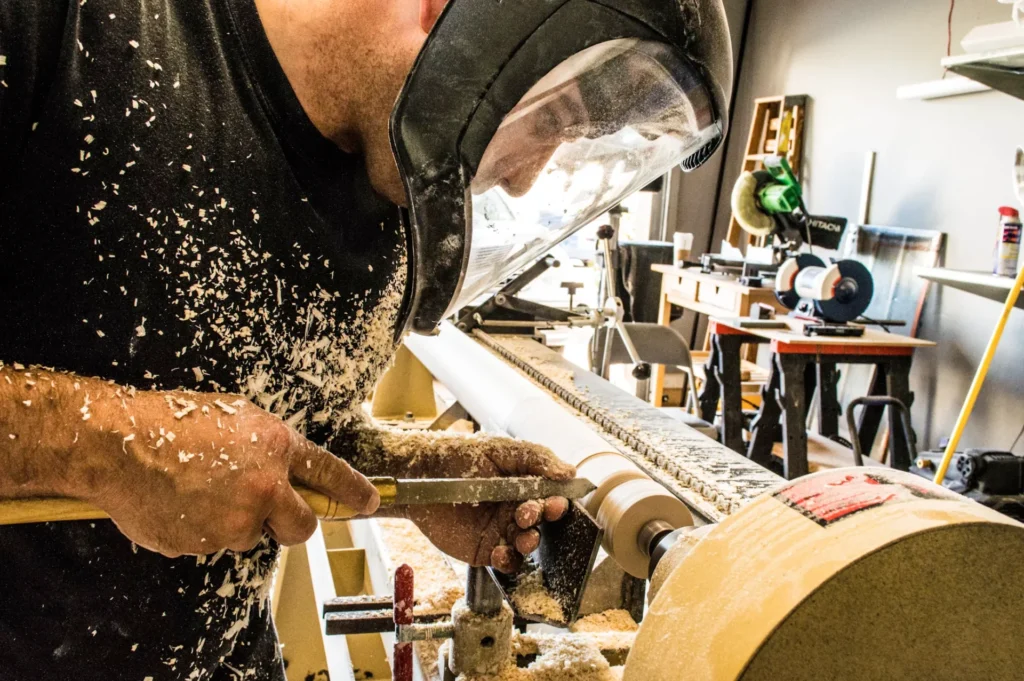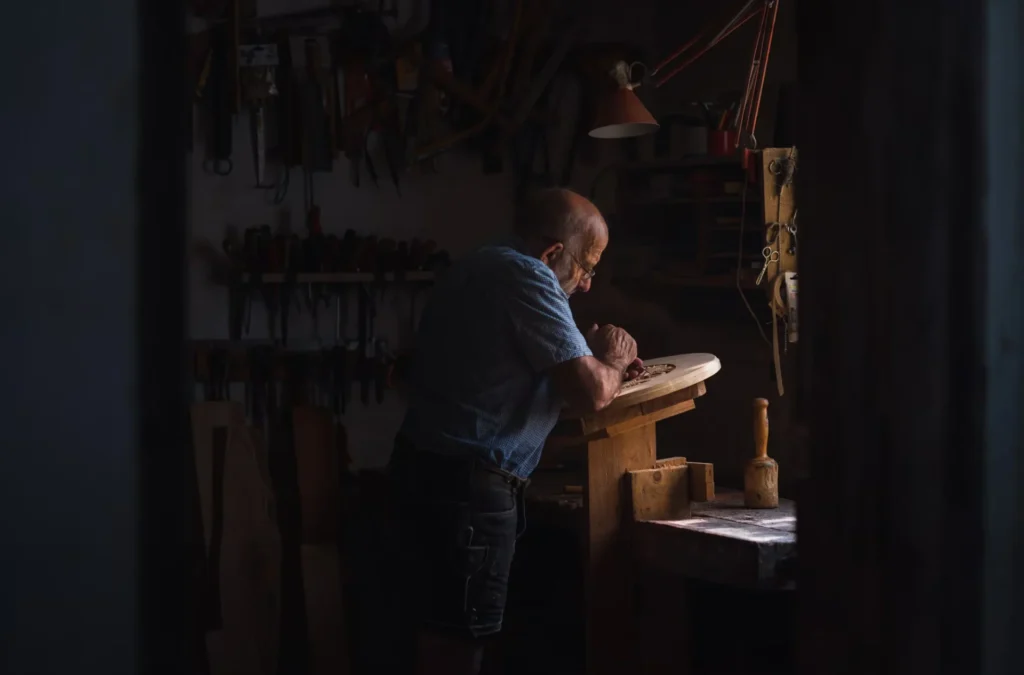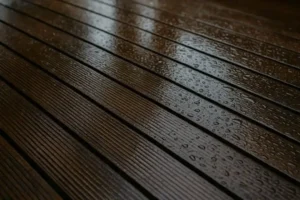Tools are of the utmost importance for any good work done in woodworking and carving. One of the most essential tools every carver should have is a traditional knife. Although the two knives have a lot in common, they are slightly different in terms of how each was designed for a particular work.
What Makes a Chip Carving Knife Unique?
One key aspect of a chip carving knife is its short and triangular-bladed tip, which is very well suited for precise cuts (controlled use). This is great for exact reproductions of intricate, fanciful carvings and for sculpting small wood shavings.
Blade Type and Style: Your chipping knife’s tiny, tapering blade is razor-sharp at one end. Ideal for intricate patterns, excellent precision cuts, and thin chips of wood.
It removes small wood chips from the surface to form lovely decorative patterns, typically geometric or floral motifs, often joined in sgraffito. The sharp edge enables precise, controlled cuts and small recesses, making it perfect for intricate details.
When should you choose this knife over a traditional knife? Carving is best for lengthy, intricate designs, as well as shallow and flat carvings. For fine, precise work, the chip knife is best paired with a conventional knife for more cuts or larger forms.
How Does a Chip Carving Knife Compare to a Regular Carving Knife?

1. Traditional Carving Tool: The Versatile All-Rounder
- Ideal for: All-purpose carving jobs, such as whittling, contouring, and making bigger cuts.
- Strengths: Its versatility makes it perfect for a variety of carving methods. It is a flexible tool for various tasks because it handles deep and fine cuts.
- Limitations: It might not offer the degree of accuracy needed for complex, finely detailed designs, such as those found in Decorative carving.
2. Chip Precision Knife: The Detail Master
Ideal for: Complex ornamental patterns, particularly carvings with patterns or geometric shapes.
- Strengths: The narrow, pointed blade is ideal for removing small wood chips because it makes precise, controlled cuts. It is also perfect for shallow or flat carvings.
- Limitations: This knife set is not as adaptable as a conventional carving tool; it is unsuitable for broader or deeper cuts, hence restricting its utility to finer work.
Common Mistakes When Using a Precision Carving Knife (And How to Avoid Them)
- The first mistake is using too much effort, which can cause uneven cuts or damage to the blade. Instead, concentrate on using light, controlled strokes to create neat, accurate carvings.
- The second mistake is not regularly honing the blade. Carving can become more difficult and less accurate over time. Regular sharpening maintains the blade’s sharpness and enhances the caliber of your work, enabling smoother cuts, better precision, and a longer-lasting tool for continued use in intricate carving tasks.
- The third mistake is the incorrect direction of carving. Cutting against the grain may damage or splinter the wood, making the carving uneven or jagged. Always carve with the grain to get cleaner, smoother results and lower the chance of errors, wood cracks, or accidental damage. This technique assures that the wood fibers are correctly cut, preserving the integrity and appearance of your work.
Conclusion
The best carving knives excel at shallow carvings and fine details because of their small, pointed blades, which are intended for careful, detailed cuts. General-purpose carving knives have longer, more curved blades, which are well-suited to a greater number of tasks, such as deeper cuts, whittling, shaping, and smoothing larger surfaces. Traditional knives are more useful for mere carving tasks, though carving knives excel in intricate detail and precision. Depending on the carving needs, each has its purpose, and choosing the right tool assures the optimal results in your project.












